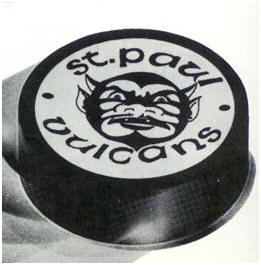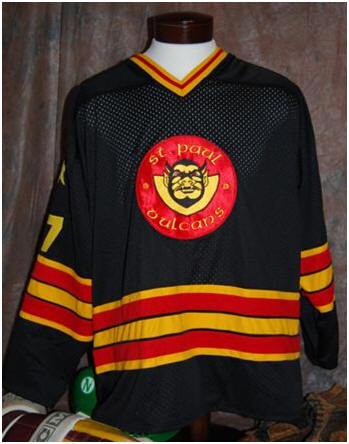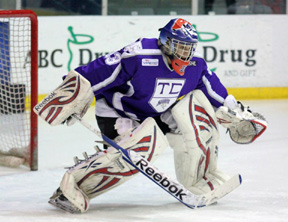Storm History before Kearney
An Example of Interconnections in the World of Hockey
The Wakota Arena in South St.
Paul, MN, was one of the first indoor ice rinks built in Minnesota. It was
completed in 1962 as one sheet of ice with a roof and four walls. Originally
financed by a private group of investors, it was later purchased by South
St. Paul. Over the years it was enlarged twice, once to add concession and
lobby space with an upstairs viewing area; then to add a second sheet of ice
and office space.
As early
as 1967 a group of local leaders recognized that there was a gap in hockey
playing experience between high school and college and for players not going
on to college. The result was the organizing of the Canadian-American Hockey
League which evolved into the Midwest Junior Hockey League (MJHL). One of
the new teams in this new league in 1973 was the St. Paul Vulcans.
The Vulcans had been first organized as the Minnesota Junior Stars in the
Thunder Bay-Minnesota Junior A Hockey League in 1971. The following
year, when the league changed its name to the Can-Am Hockey League, the team
changed its name to St. Paul Junior Stars. At the end of the 1973
season one of their rivals, the Thundar Bay Vulcans, announced they were
going to play only in Canada. The Vulcans were financed by a St. Paul
organization. This organization moved their financing to the St. Paul
Junior Stars, who then changed their name to the St. Paul Vulcans.

The Vulcans played their home
games at the University of Minnesota Area first and then moved over to
Wakota Arena. When the Vulcans moved to the Augsburg College arena in
Minneapolis, Wakota became the home of the South Suburban Steers in the
Minnesota Junior Hockey League. A player on this team in the late 1990's was
Eric Fink. Later the Steers were sold, reorganized, and moved to the
Bloomington Ice Gardens in 2002 to play as the Northern Lights with Eric
Fink as their coach.
Meanwhile, in the late 1970’s the Midwest Junior Hockey League was having
financial problems. The USHL, which at that time was a men’s senior league,
was also having financial problems. The two leagues agreed to merge in the
1977-78 season. By the following year the USHL was entirely a junior league
with the St. Paul Vulcans one of their original teams. Over the years the
Vulcans developed a relationship with the University of Minnesota to the
point they became known as the “Gopher's Hockey farm team.”

In 1995 in an attempt to
broaden their fan base, the St. Paul Vulcans changed their name to the Twin
Cities Vulcans. At some point they left the Augsburg arena to use the
Columbia Arena in Fridley. For the 1999-2000 season the Vulcans used the
Bloomington Ice Gardens – that same place that would be used by the Northern
Lights three years later.
In the summer of 2000 the Vulcan franchise was purchased by Ted Baer who
also owned the Omaha Lancers in the USHL. He moved the team
“from the Twin Cities to a ‘hidden hockey hot bed’ in Kearney, Nebraska, to
become the Tri-City Storm.…” In the summers of 2004-8 this team
returned to the Bloomington Ice Gardens to hold their tryout camps.
In the summer of 2009 Eric Fink came to Kearney as an assistant coach for
the Tri-City Storm and stayed for four seasons here.
http://history.vintagemnhockey.com/page/show/815270-st-paul-twin-cities-vulcans-1973-1995-
https://en.wikipedia.org/wiki/St._Paul_Vulcans
Interview with Eric Fink, Sept. 2009
|
|

